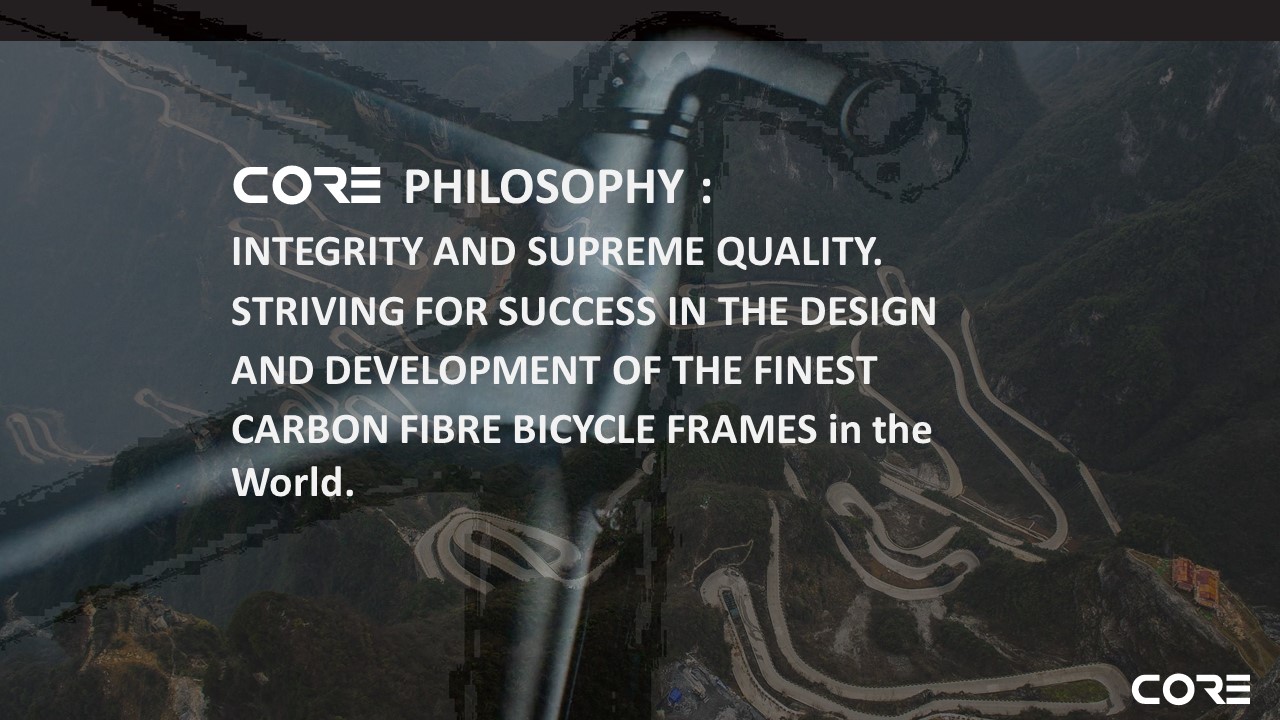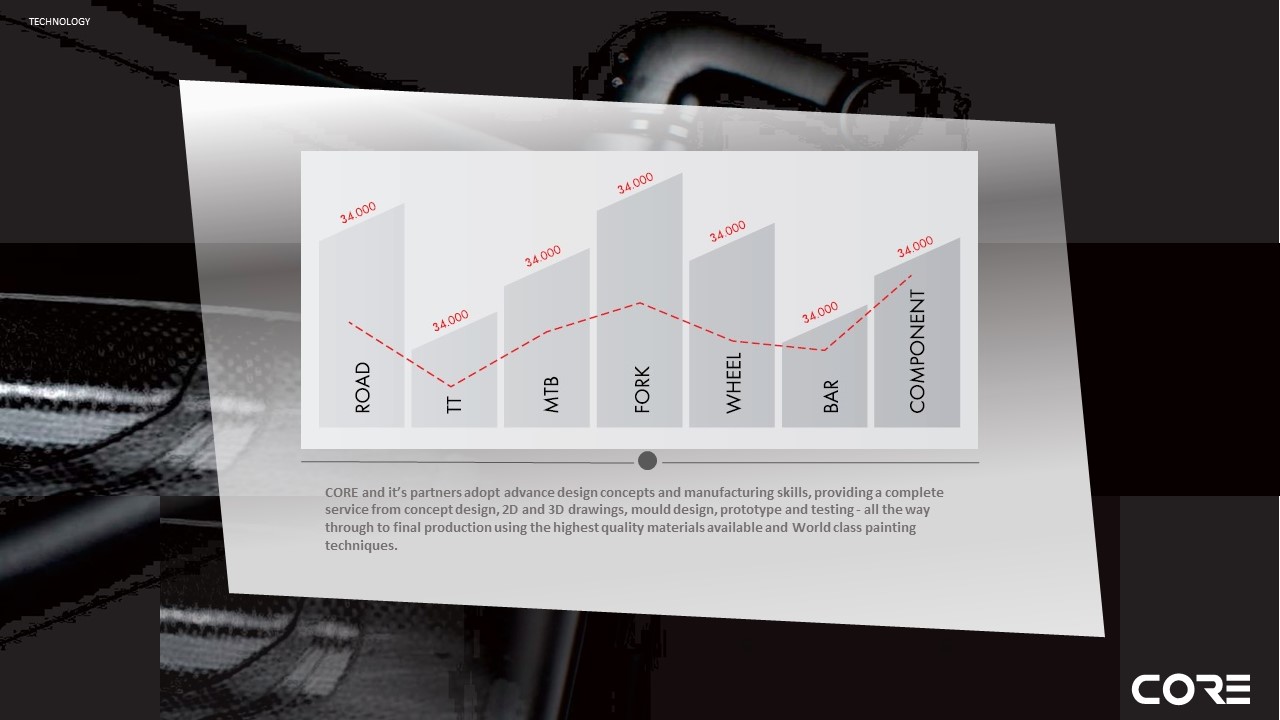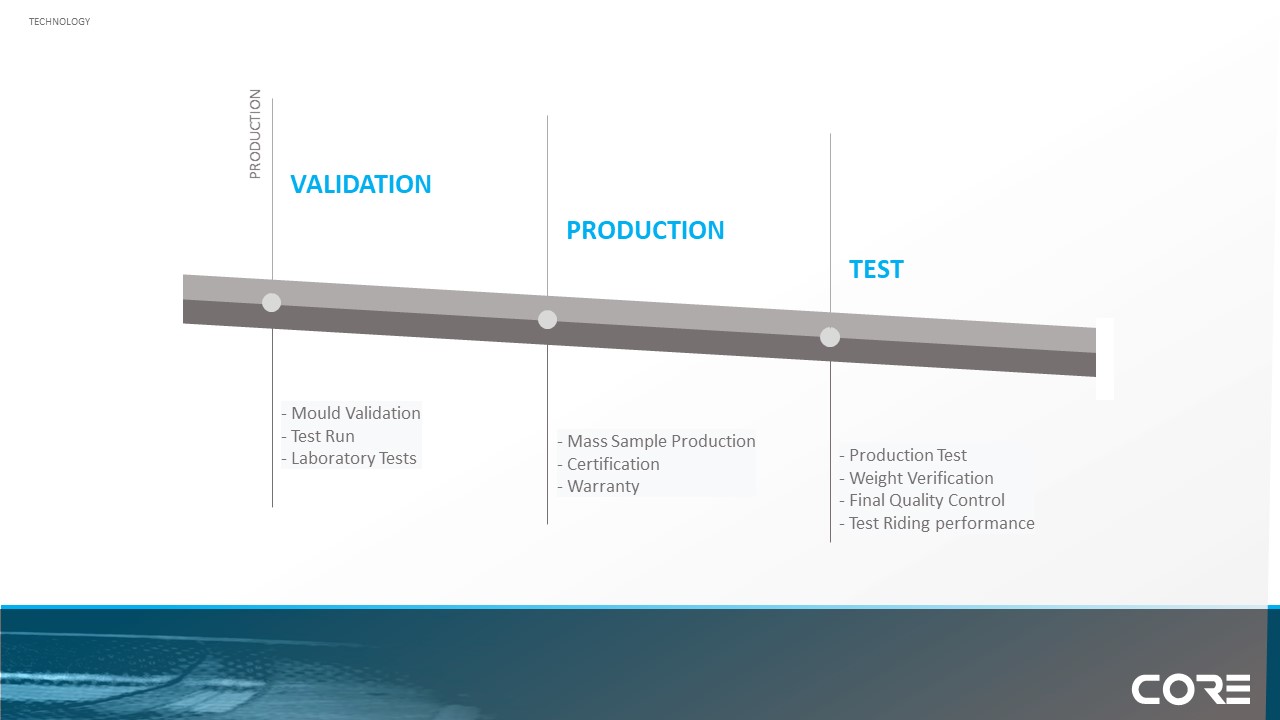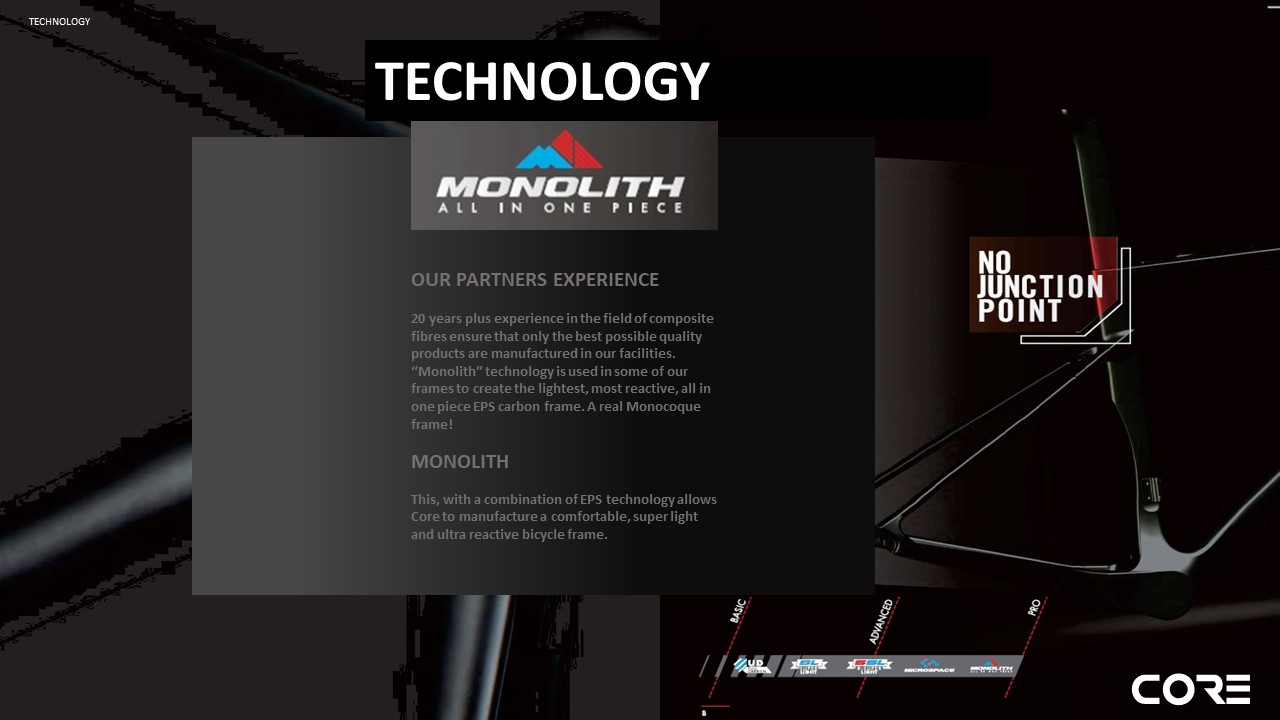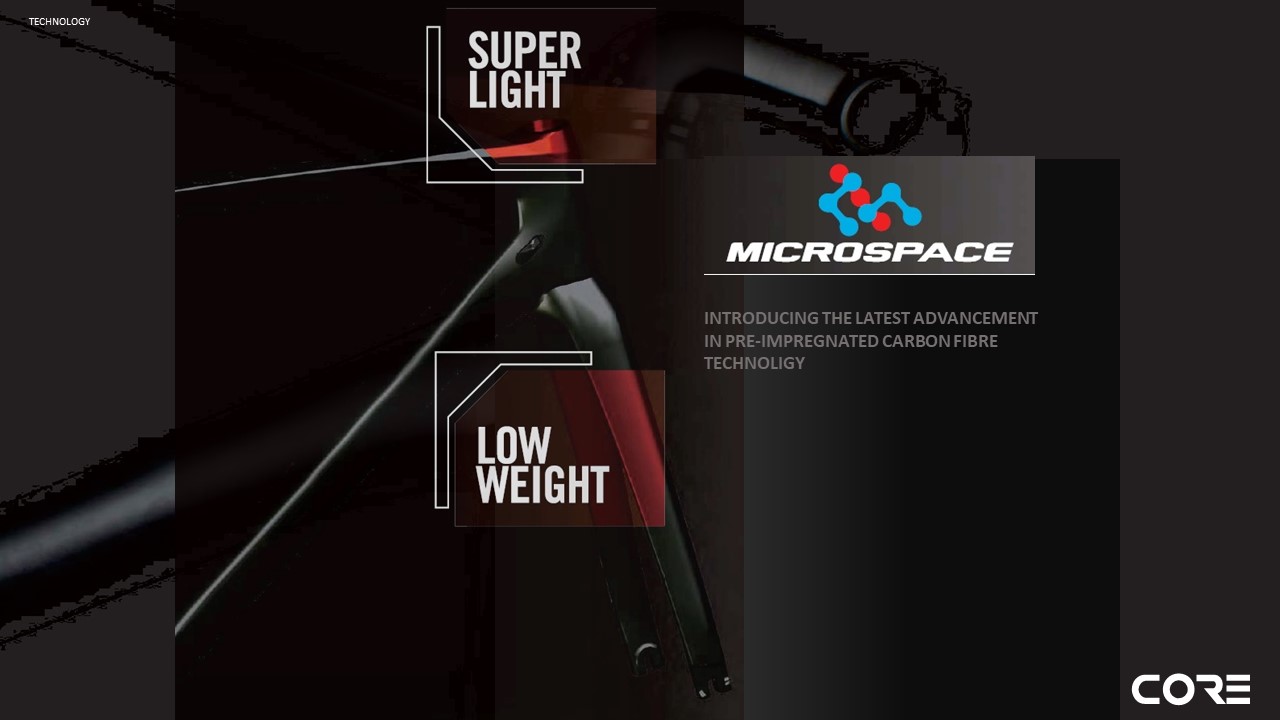
Technology
Carbon fibre bike frames were once the preserve of super-expensive elite-end racing bikes, but with improved manufacturing techniques these amazing frames are now starting to become more widely available for the road rider who is chasing speed on a more realistic budget.
Made from weaving carbon fibre strands and then setting within a hard epoxy resin, carbon road bike frames are very light, strong and reasonably stiff. The material is also easy to craft into aerodynamic shapes, and allows engineers to really play with variable strength or flex in crucial areas around the bike.
Read on to discover what technology CORE is using for the manufacturing of it's frames.
Benifits of Carbon
Carbon fibre bike frames were once the preserve of super-expensive elite-end racing bikes, but with improved manufacturing techniques these amazing frames are now starting to become more widely available for the road rider who is chasing speed on a more realistic budget.
Made from weaving carbon fibre strands and then setting within a hard epoxy resin, carbon road bike frames are very light, strong and reasonably stiff. The material is also easy to craft into aerodynamic shapes, and allows engineers to really play with variable strength or flex in crucial areas around the bike.
Read on to discover the top five benefits of a carbon fibre bike.
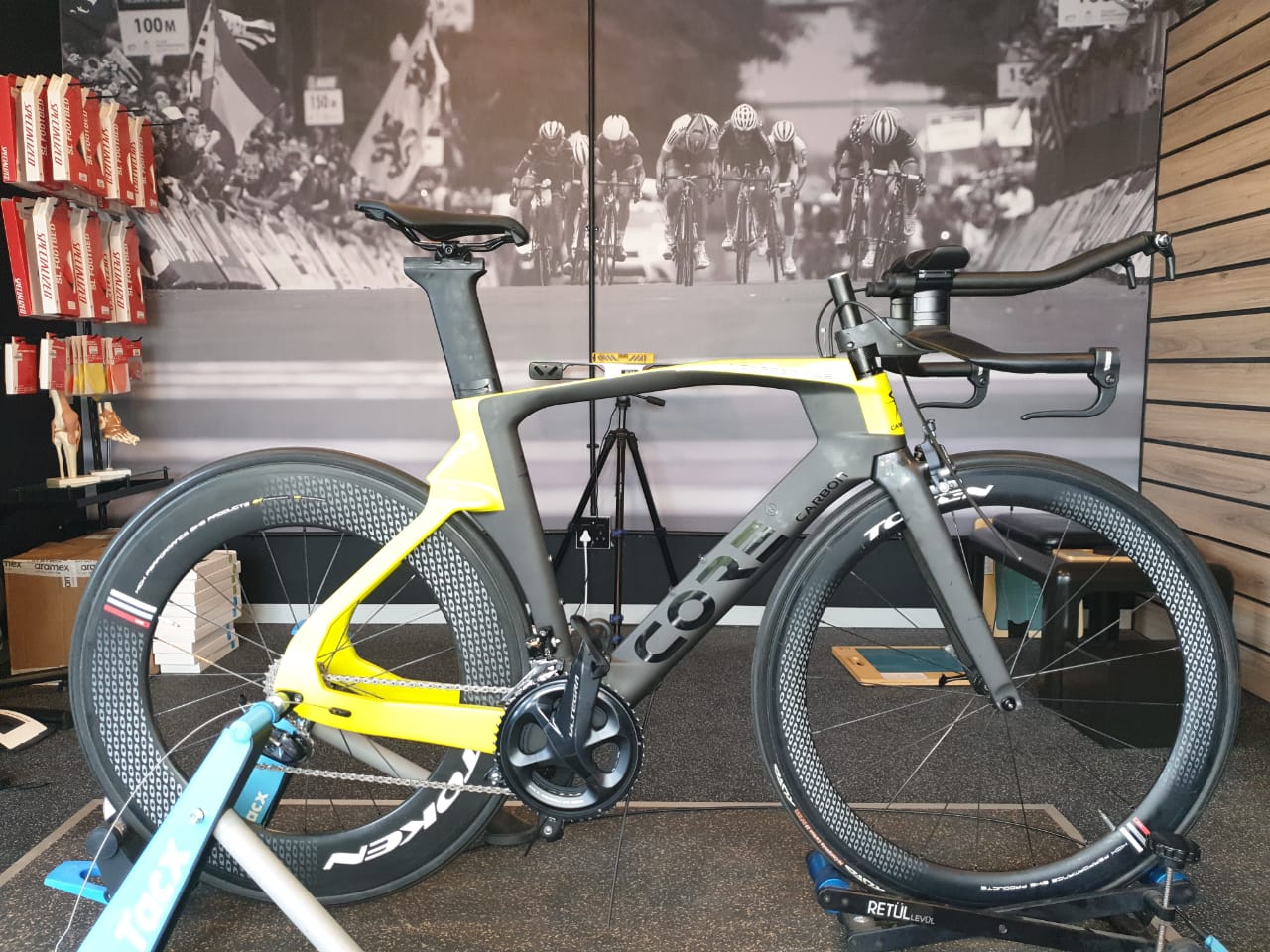
LOOKS
The introduction of carbon fiber opened up new possibilities in bicycle design. The smooth curves and swooping shapes of today’s bikes would have been unimaginable in the era of steel and titanium. Hydroforming allows manufacturers to form aluminum frames into smooth aerodynamic shapes. Seamless welds can add to that smooth appearance, making some new aluminum frames almost indistinguishable from carbon at a distance.
Then there’s the situation where carbon is often seen as a status symbol. Some may bristle at the very thought of riding "lowly" aluminum. Others may see carbon as too tryhard. Ultimately, a good looking bike could be made out of anything if it’s done right. It's up to the rider, and if you're happy, that's all that matters.
The Bottom Line: Beauty is in the eye of the beholder. Ride what you like and be happy!
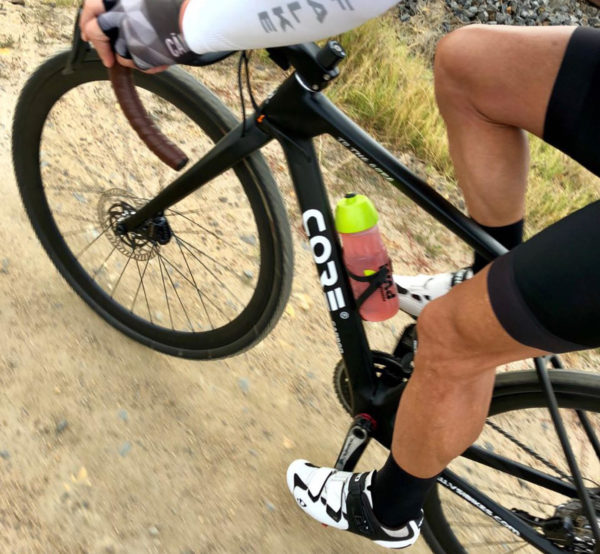
Carbon has a slight edge, but if comfort your biggest concern, frame material is often secondary to other more important factors. Is the bike intended for road racing or endurance riding? Look at things like tire clearance, fit, and geometry. Ultimately, no matter the frame material, comfort is something that can always be fine-tuned or improved.

Both carbon and aluminum frames can be made to be responsive and stiff. The responsiveness and stiffness of carbon frames can be engineered and tuned to a higher level and it can be finely controlled, giving carbon a slight edge over aluminum. Most average riders, however, will be just as fast on either.
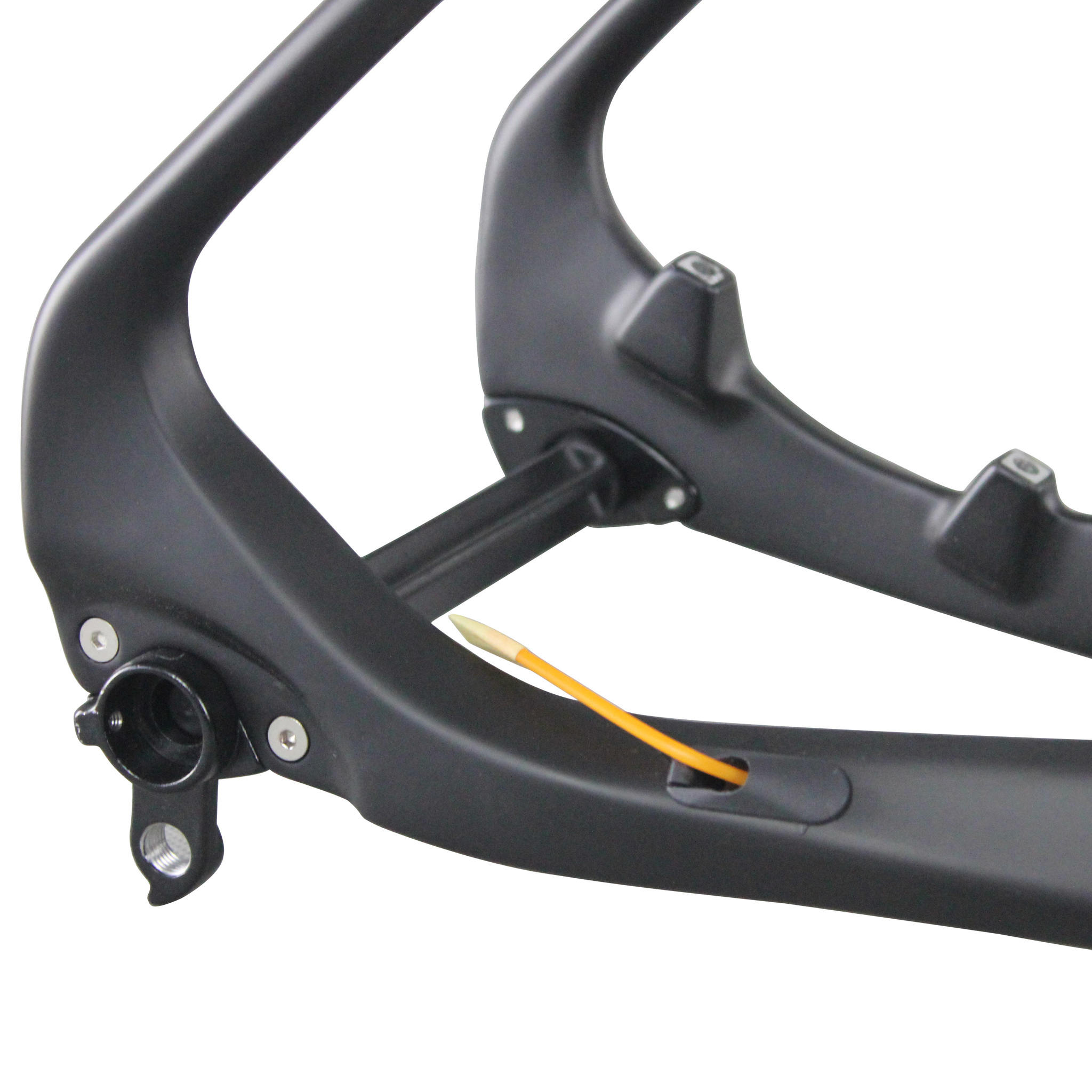
Modern frames, in general, are fairly durable and any frame that’s properly cared for can last a long time. Bad luck and crashes can happen to anyone and in these cases, aluminum has historically been considered more robust, durable, and cheaper to replace if the worst happens. Carbon should be looked after carefully but it can sometimes be repaired if there's minor damage.

